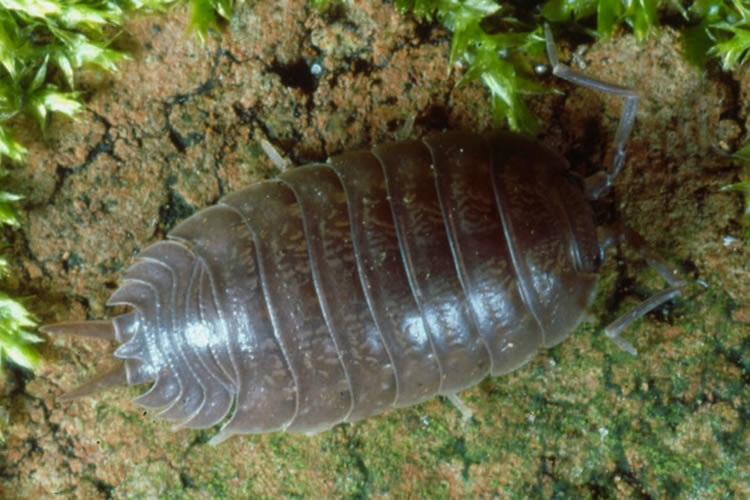Porcellio laevis Latreille, 1804
Status:
- GB IUCN status: Least Concern
- GB rarity status: Nationally Scarce
ID Difficulty
Identification
Porcellio laevis is a large woodlouse (to 20 mm body length), but differs from other Porcellio spp. in having a smooth dorsal surface. In the male the uropods are elongated and 'spear-shaped'. The combination of two flagella segments and two pairs of pleopodal lungs (typical of all Porcellio spp) distinguishes it from Oniscus asellus.
It can be confused with Porcellio dilatatus and frequently with the ball-rolling Cylisticus convexus.
Distribution
Although never common, Porcellio laevis was widely recorded across Britain and Ireland through out the 20th Century. However, there seem to be very few modern records, and although probably under-recorded it does seem to have undergone a dramatic decline throughout the 20th century (Harding, 2016). There are just a handful of post-2000 records, with an updated distribution map given in Gregory (2024).
Habitat
It is principally associated with synanthropic habitats, such as old mature gardens, stables or dairy farms.
It should be sought within well-rotted compost heaps and dung heaps or under pieces of manure, straw and other debris, wherever some moisture has been retained. Typically, it is associated with Porcellionides pruinosus and Porcellio scaber (and even P. dilatatus at some sites).
This summary is based on the detailed account in Gregory (2009), updated in Gregory (2024).
References
Harding, P.T. (2016) Is Porcellio laevis (Latreille) declining in Britain and Ireland? Bulletin of the British Myriapod & Isopod Group 29: 23-27.
Gregory, S. (2009) Woodlice and Waterlice (Isopoda: Oniscidea & Asellota) in Britain and Ireland. Field Studies Council/Centre for Ecology & Hydrology.
Links
World List of Marine, Freshwater and Terrestrial Isopod Crustaceans: https://www.marinespecies.org/isopoda/aphia.php?p=taxdetails&id=262343








